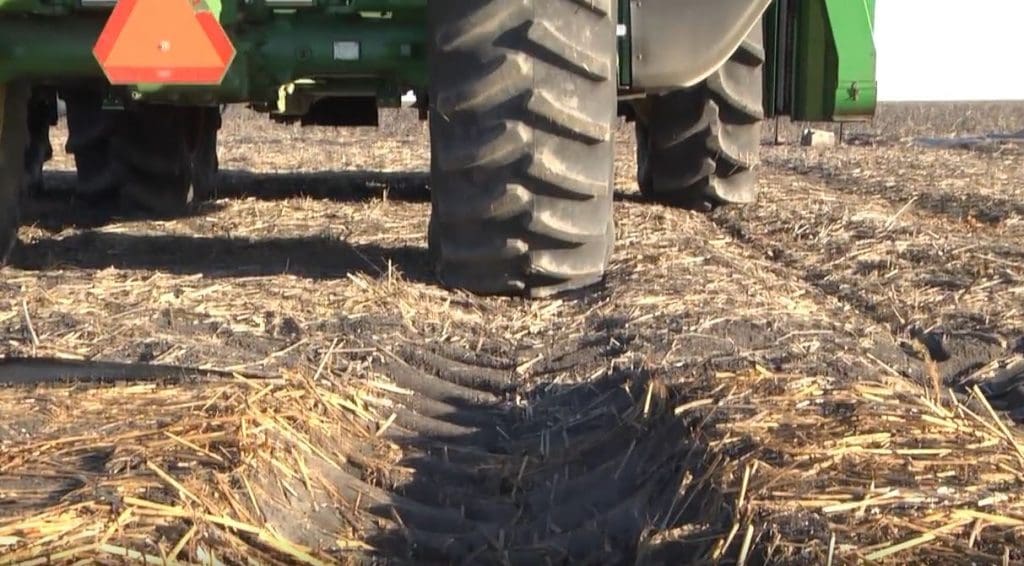 AGRICULTURAL consultants and advisers consider compaction one of the biggest constraining factors impacting cotton yield and profit, according to the latest Crop Consultants Australia survey.
AGRICULTURAL consultants and advisers consider compaction one of the biggest constraining factors impacting cotton yield and profit, according to the latest Crop Consultants Australia survey.
The survey found that, in consultants’ estimations, more than half of last year’s cotton crop was impacted by compaction, with 16 per cent impacted by more than one bale per hectare.
Research from CSIRO and the University of Southern Queensland (USQ) to better understand compaction from the John Deere 7760 round bale pickers – invested in by CRDC – has found that the optimal moisture level needed to avoid compaction is actually well below the previous recommendations of being near the soil plastic limit (the point at which the soil goes from just starting to crack, to one where it behaves like plasticine).
What do growers need to know?
- Increases in machine weight and large traffic footprint can substantially impact yields and tillage energy costs by compaction impacts through at least 80 centimetres depth.
- Flotation is not avoidance of compaction. Just because you don’t see substantial wheel ruts at the surface does not mean compaction is not happening below. The stress on the soil is transferred to depth, and if the soil is close to the plastic limit then compaction will occur.
- The simplest way to determine plasticity is to take samples to around the depth of the major rooting zone (up to 40-50cm, from top of hill) and squeeze it between thumb and forefinger. If it does not feel like plasticine then it is lower than the plastic limit.
- The best approach to managing soil compaction is to avoid it, which is why Controlled Traffic Farming (CTF) is best practice for limiting compaction, increasing yield potential and decreasing environmental cost.
- Where CTF is not yet available, compaction can be minimised by ensuring in-crop traffic only occurs well below the plastic limit, and as close to the permanent wilting point as possible. Traffic when soil is near or above the soil ‘plastic limit’ should be avoided with the JD7760 if a CTF system is not used.
- The soil profile should be dried down prior to defoliation to minimise compaction: once the crop is defoliated no soil moisture is extracted by the crop.
What if it rains during picking?
The closer the soil’s wilting point to the plastic limit, the greater the risk of compaction.
For many of the industry’s cracking clay soils, the plastic limit will be very close to being the same as the wilting point limit.
For compaction to be minimised the soil needs to dry out to a point below the plastic limit.
For example, if a cracking clay soil (0-10 cm) has a field capacity (FC) of 57.7pc, a wilting point (WP) of 30.9pc and plastic limit (PL) of 29.1pc, the PL and WP are very similar which makes the soil susceptible to compaction.
This soil would need to undergo 28.6 millimetres of drying to go from FC to PL.
Depending on daily evaporation rates it could take a considerable period of time for the soil to become dry enough to fall below the plastic limit.
At 6-8mm per day it would take 4-6 days to dry out the top 10cm of soil.
After significant rainfall events the time taken to dry to lower depths will be much longer.
Video: Measuring compaction
Video: Consider controlled traffic to minimise soil compaction
Source: CottonInfo
For more information, see the soil compaction section within chapter 6 (page 30) of the CRDC/CottonInfo Australian Cotton Production Manual .
This story first appeared in CottonInfo’s May 2018 e-news.
Grain Central: Get our free daily cropping news straight to your inbox – Click here

HAVE YOUR SAY